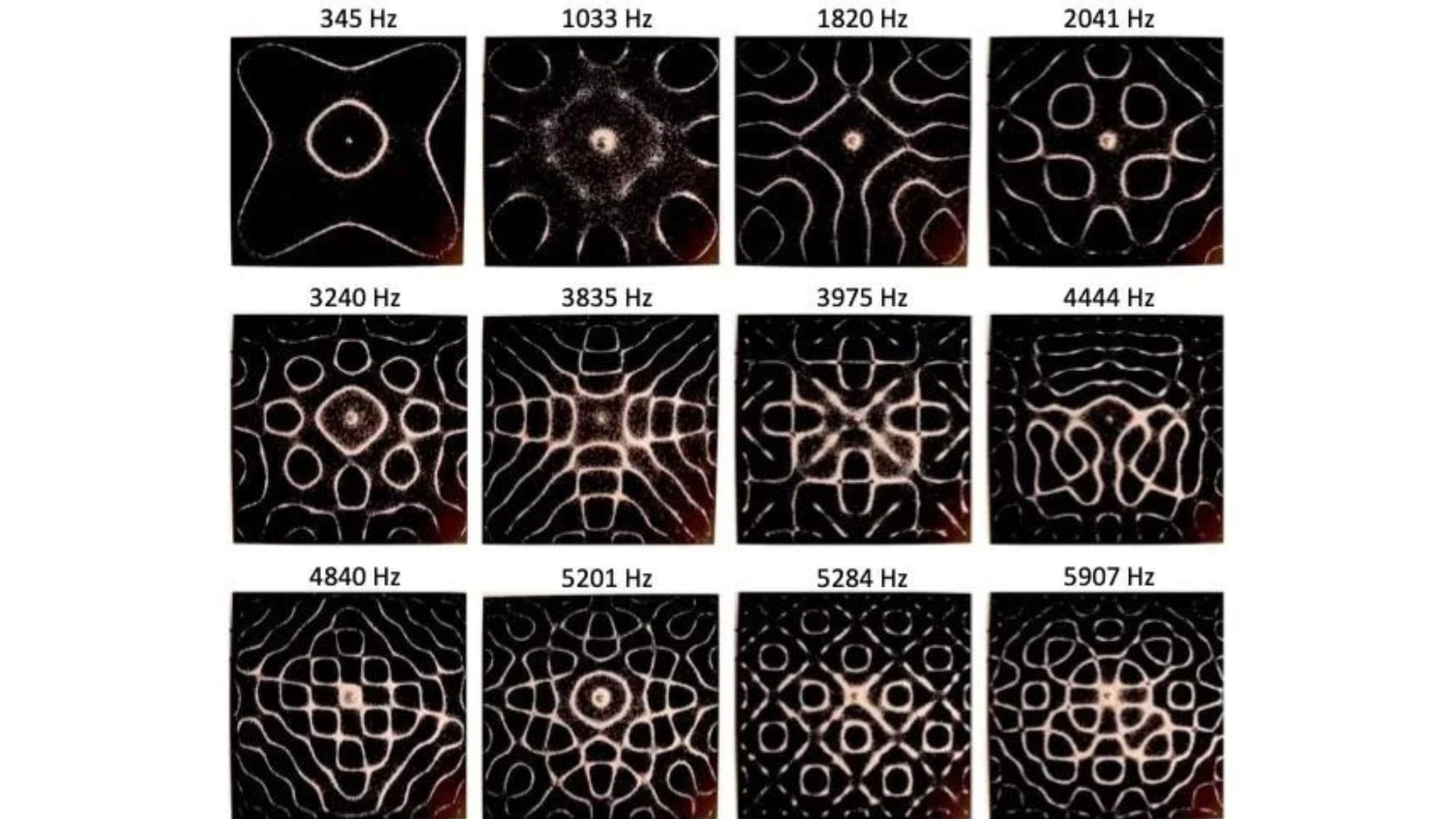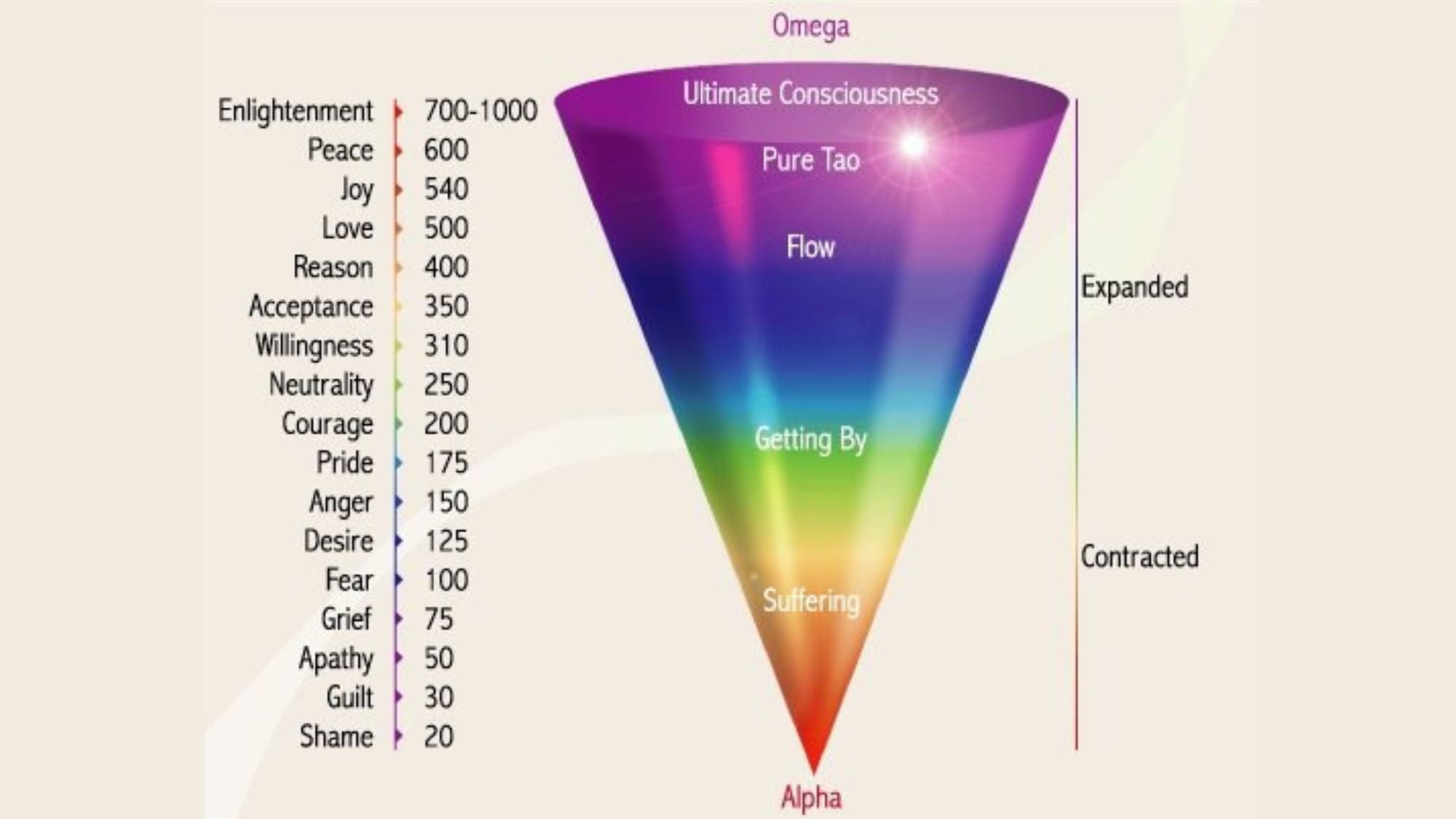Sound and Creation: Frequency And Vibrations Explained

Sound surrounds us every day, from the whispers of nature to the rhythms of city life. Across the world and through history, different cultures share a fascinating idea: the universe began with a sound. From the biblical "In the beginning was the Word" to the ancient Egyptian god Ptah speaking the world into existence, sound is seen as the starting point of creation.
In this blog post, we'll talk about how sound, frequency, and vibration are not just part of music and speech but are the essence of the universe. It is mind-blowing how sound creates and affects EVERYTHING in the universe!
Table of Content
1. Sound As A Universal Creative Force In Different Cultures
1.1 Biblical Tradition
In the West, one of the most iconic beginnings is found in the Judeo-Christian Bible, where it is stated, "In the beginning was the Word." This phrase highlights the profound belief that the universe was created from a divine utterance—a sound. This concept underscores sound's inherent power and its connection to creation, suggesting that the universe itself unfolded from a spoken command.
1.2. Islamic Tradition
In Islam, the concept of the "Word" (Kalimah) holds significant power. The Quran states that when Allah intends to create something, He merely says to it, "Be," and it becomes (Kun Fayakun). This phrase shows the instant manifestation of God’s will through His word, emphasizing the profound impact and creative force of divine utterance.
1.3. Ancient Egyptian Mythology
Moving to the sands of ancient Egypt, we encounter Ptah, the god of craftsmen and architects. According to Egyptian mythology, Ptah conceived the world in his heart and then brought it into being by speaking it aloud. This story captures the mystical essence of sound as a tool of creation, where divine thoughts vocalized into the physical universe demonstrate the transformative power of sound.
1.4. Hindu Tradition
In Hindu tradition, the sacred syllable "Om" is the primordial sound from which the entire universe has sprung. This sound is not only chanted but is believed to resonate through all existence, embodying the essence of the universe.
1.5. Aztec Mythology
The god Quetzalcoatl used a conch shell to create life, showcasing sound's role in birthing new existence.
1.6. Inuit Beliefs
The Inuit legends speak of the raven, which created the world and the waters by the beat of its wings, again emphasizing sound's integral role in creation.
All these stories from different cultures and religions show how sound is a foundational element in creation, suggesting a deep, intrinsic link between sound and the birth of worlds across different civilizations.
Read Also:

2. Sound In Human Development

2.1. Biological Significance in Fetal Development
Sound plays a fundamental role in human development starting from the earliest stages of life. Remarkably, the inner ear is the first sensory organ to develop in a fetus, becoming functional by about the 18th week of pregnancy. This early development underscores the importance of sound to human growth even before birth. The fetus begins to respond to external noises, with studies suggesting that the sound of the mother's voice not only provides comfort but also stimulates early language learning and bonding.
2.2. Neurological Impact of Sound
The impact of sound extends deeply into neurodevelopment. The auditory system's extensive connection to the brain is much denser than that of the visual system, which illustrates the significant role of sound in brain development. These auditory connections help to:
- Stimulate Cognitive Functions: Sounds, particularly language and music, are crucial for the cognitive development of children, influencing areas such as memory, learning rates, and problem-solving skills.
- Regulate Emotional Well-being: Lullabies and soft music, often used to soothe infants, are not just cultural practices but have been shown to stabilize heart rates, reduce anxiety, and facilitate deeper sleep in babies.
2.3. Sound and Vibration in Child Development
As children grow, sound continues to play a vital role in their physical and emotional development:
- Educational Growth: Various educational strategies leverage sound through music and rhythmic repetition to enhance learning and retention of information.
- Emotional and Social Development: Interactive play involving sound and music helps children develop social skills and emotional intelligence, teaching them about communication and emotional expression.
2.4. Therapeutic Uses of Sound
The therapeutic potential of sound is tapped in numerous clinical settings, highlighting its importance across the lifespan:
- Music Therapy: Used for a range of conditions from depression to brain injuries, music therapy can improve mental health and cognitive function.
- Audiology Treatments: For hearing impairments, the strategic use of sound frequencies can help in rehabilitation, demonstrating the critical role of sound in maintaining and restoring communication abilities.
Read Also:

3. The Science Of Sound And Vibration
3.1. The Physics of Sound
Sound is fundamentally a vibration that propagates as an acoustic wave through a transmission medium such as air, water, or solid objects. This vibration involves the movement of particles in the medium back and forth from their resting positions in a pattern known as a sound wave.
When these particles vibrate, they transfer energy through the medium without transporting matter. The frequency of a sound wave, measured in hertz (Hz), dictates its pitch; the higher the frequency, the higher the pitch, and vice versa.
3.2. Manifestation of Vibration at Different Frequencies
The way vibration manifests at different frequencies has fascinating implications for the physical world. Each frequency interacts uniquely with the surrounding environment, affecting everything from the structural integrity of objects to the human perception of sound. For example:
- Low Frequencies: These are often felt as much as heard, like the bass in music, which can cause physical vibrations that one can feel through the body or see as they cause objects to move or rattle.
- High Frequencies: At very high frequencies, sounds can become inaudible to humans but can still affect the environment, such as in medical imaging technologies like ultrasound.
3.3. Influence on the Physical World
One of the most visually compelling examples of how sound frequencies influence the physical world is seen in the study of cymatics. Cymatics involves visualizing sound vibrations by placing particles like sand or liquids on a plate that vibrates at certain frequencies.
As the frequency changes, so does the pattern formed by the materials on the plate, creating intricate and often beautiful patterns that visibly demonstrate how sound structures matter.
For example:
- At lower frequencies, the patterns formed may be simple and less detailed, but as the frequency increases, the complexity and intricacy of the patterns grow.
- This phenomenon not only illustrates the impact of sound on physical matter but also metaphorically suggests how natural phenomena like the geometric shapes in snowflakes or the patterns on animal skins could be influenced by vibrational forces.
Read Also:

4. Sound vs Frequency vs Vibration

4.1. Definitions
- Sound: Sound is the movement of pressure waves transmitted through mediums such as air, water, or solids. It is these waves that our ears perceive as sound, translating the fluctuations in pressure into signals that our brains interpret.
- Frequency: Frequency refers to the rate at which sound waves vibrate, which is measured in hertz (Hz). The frequency of a sound wave determines its pitch—higher frequencies produce higher pitches, while lower frequencies result in lower pitches.
- Vibration: Vibration is the back-and-forth or oscillatory motion of particles caused by the energy of sound waves. When sound waves travel through a medium, they cause the particles in that medium to move in a rhythmic pattern.
4.2. How They Interconnect
The relationship between sound, frequency, and vibration is profound and intrinsic, forming the basis of our auditory experience and influencing more than just our sense of hearing.
Here's how these elements interact and affect our perception and the world around us:
- Perception of Sound:
Our perception of sound is directly tied to how vibrations of different frequencies affect the delicate structures within our ears. These vibrations are translated into electrical signals sent to the brain, enabling us to distinguish sounds and comprehend their sources. - Impact on Matter:
On a physical level, sound waves can influence the structure of matter. For example, different frequencies and vibrations can create patterns in substances like sand or water, famously demonstrated in cymatics experiments. These patterns show that sound frequencies can organize particles into complex forms, hinting at how sound might shape natural structures at the microscopic and macroscopic levels. - Biological and Psychological Effects:
The frequencies and vibrations of sound can also have profound biological and psychological effects. Certain frequencies are known to influence brain activity, potentially inducing relaxation or alertness. This is used in therapeutic practices like sound healing, where specific frequencies are used to promote health and emotional well-being. - Spiritual Significance:
The interplay of sound, frequency, and vibration holds significant cultural and spiritual importance. Many traditions use chanting, drumming, or other forms of music, believing these sounds can align energies, transform consciousness, and even connect with the divine.
Read Also:

5. Metaphysical and Philosophical Aspects of Sound

5.1. Sound as the Fabric of Existence
The idea that sound forms the fundamental fabric of existence is a recurring theme in both ancient wisdom and modern metaphysical thought. This concept extends beyond the physical interaction of sound waves with the material world, suggesting that sound is integral to the very structure of reality itself.
5.2. David Bohm's Implicate Order
David Bohm, a prominent physicist, proposed the theory of the Implicate Order, which posits that all aspects of reality are enfolded in each other and that every point in space contains the whole of the universe. Sound, from this perspective, plays a crucial role as it carries the potential to unfold from the implicate (hidden) to the explicate (manifest) order.
Bohm suggested that vibrational patterns observed in sound waves are a physical manifestation of this deeper dimensional order, providing a unique insight into how the universe is interconnected at a fundamental level.
5.3. Nikola Tesla and the Philosophy of Vibrations
Nikola Tesla, renowned for his revolutionary contributions to electromagnetism and electrical engineering, also delved deep into the metaphysical aspects of energy, frequency, and vibration.
He famously stated, "If you want to find the secrets of the universe, think in terms of energy, frequency, and vibration." Tesla viewed these elements as the key to understanding not just physical phenomena, but also the metaphysical aspects of reality.
According to Tesla, by studying vibrational physics, one can uncover the underlying principles that govern the visible and invisible worlds, suggesting that the universe itself might be understood as a symphony of interacting frequencies.
5.4. Interplay Between Sound, Consciousness, and Reality
The philosophical exploration of sound extends into how it interacts with consciousness and reality:
- Sound and Perception: Philosophers and scientists alike have speculated that sound may shape our perception of the world, influencing how we see, feel, and interact with our environment.
- Sound as a Tool for Transformation: Across various spiritual traditions, sound is used as a tool for transformation and enlightenment, used to align and harmonize the individual’s inner frequency with that of the universe.
5.5. Ethical and Existential Implications
The study of sound also raises ethical and existential questions. If the universe is fundamentally vibrational, then the sounds and frequencies we generate and interact with could have profound effects not only on our personal health and well-being but also on the world around us.
This perspective invites a deeper contemplation of how we use sound in our daily lives, from the music we listen to to the words we speak, and the vibrations we emit through our thoughts and actions.
Read Also:

6. The Healing Power Of Frequencies
6.1. Historical Usage
Throughout history, many cultures benefited from the therapeutic properties of sound and incorporated specific frequencies into their healing and spiritual practices.
Here are a few notable examples:
- Ancient Egypt: The priests used vocal toning and chants to heal and invoke spiritual awakening. They believed these sounds could resonate with the body’s energy centers to promote health and well-being.
- Tibetan Monks: Singing bowls, gongs, and chants have been used for centuries in Tibetan culture to facilitate deep meditation and healing. The vibrations produced are thought to restore balance to the body and mind.
- Gregorian Chants: In Western traditions, the solemn tones of Gregorian chants were considered to have mystical properties that could calm the mind and spirit, aligning the monks with divine frequencies.
6.2. Modern Usage
Today, the understanding of sound's therapeutic effects has been shaped by both technology and ongoing research.
Some of the modern applications include:
- Binaural Beats: This technique involves playing two slightly different frequencies in each ear. The brain perceives these as a single tone which is the mathematical difference between the two frequencies, which can encourage various states of relaxation or alertness. This is often used for stress relief, meditation, and personal growth.
- Sound Therapy: Therapists use tuned instruments like tuning forks and quartz crystal bowls to produce sounds that resonate with the body’s natural frequencies. This form of therapy is aimed at releasing tension and promoting emotional balance.
- Biofield Tuning: Based on the premise that the human biofield — the energy field that surrounds and permeates the body — can be influenced by sound vibrations, this therapy uses tuning forks to help alleviate conditions such as anxiety, pain, and stress.
The use of these sound-based therapies reflects a blend of ancient wisdom and modern science so that the healing power of frequencies continues to be a vital tool in improving physical, mental, and emotional wellness.
Final Words
Exploring the roles of sound in creation, human development, and the metaphysical fabric of existence reveals its profound influence on life and consciousness. This knowledge invites us to engage with sound more consciously, whether through meditation, mindful music listening, studying cymatics, or discussing its impact on personal and global levels.
I encourage you to experiment with the sounds in your life and explore their effects on your well-being. By tuning into and harmonizing with the vibrations around us, we can enhance our personal and collective experiences in profound ways.
Become a Sista and follow us on Instagram, subscribe to our YouTube channel, and tune into our podcasts on Spotify!
Frequently Asked Questions
1. Was the universe created with sound?
While science doesn't explicitly state that the universe was created with sound, many cultural and spiritual traditions suggest that sound or a primordial vibration played a significant role in the creation of the universe. In physics, vibrations and frequencies are fundamental to the structure and dynamics of the cosmos.
2. Is sound the source of creation?
In many spiritual beliefs, sound is considered a source of creation. For example, in the Judeo-Christian tradition, it is said, "In the beginning was the Word," implying sound or divine speech as a creative force. Similarly, Hinduism refers to the sacred sound "Om" as the origin of the universe.
3. What is the first sound of creation?
The first sound of creation is often described as "Om" in Hindu scriptures, symbolizing the primordial sound from which the universe was born. This sound represents all-encompassing consciousness and is considered the fundamental vibration of existence.
4. What are the most powerful frequencies?
- 432 Hz: Often considered a natural frequency of the universe and said to promote relaxation and natural harmony when music is tuned to this frequency.
- 528 Hz: Known as the "Love frequency," it is reputed to promote healing, clarity, and peace of mind. It is also claimed to repair DNA.
- 639 Hz: Part of the Solfeggio frequencies, which are a set of tones used in sacred music. This particular frequency is believed to encourage communication, understanding, tolerance, and love.
- 963 Hz: Also a Solfeggio frequency, it is said to help awaken one's highest self and return to spiritual order.
- 7.83 Hz (Schumann Resonance): This is the fundamental frequency of the Earth’s electromagnetic field. It is often thought to be a natural grounding frequency that helps in improving stress tolerance, mental health, and overall well-being.


